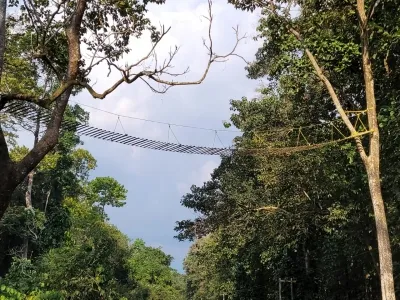Did the Bengal Government Overlook Warnings About Forest Loss in Darjeeling Hills?

Synopsis
Key Takeaways
- Rapid deforestation in the Darjeeling district since 2011.
- 31% decrease in forest cover from 2011 to 2023.
- Severe environmental impacts due to landslides and rainfall.
- Need for sustainable development practices.
- Criticism of government negligence regarding environmental warnings.
Kolkata, Oct 13 (NationPress) The West Bengal government appears to have disregarded warnings from central reports regarding the alarming decrease in forested areas in the Darjeeling district since 2011. This region was severely impacted earlier this month due to heavy rainfall and subsequent landslides.
Opposition parties and environmental advocates have pointed to the swift deforestation driven by rampant real-estate development in the hills as the primary cause for the disruption of the local ecosystem. They have also accused the state government of overlooking this vital environmental concern.
The biennial India State of Forest Report (ISFR) for 2023, which is the latest version available, clearly indicates that despite warnings regarding the rapid forest loss in the Darjeeling district, the state government seems to have either ignored or failed to act on these cautions.
This report is compiled and issued every two years by the Forest Survey of India (FSI) based in Dehradun.
According to the ISFR for 2023, the total forest area in the Darjeeling district was recorded at 1,402.67 square kilometers, a significant drop from 2,289 square kilometers in 2011, marking the last year of the previous Left Front administration and the inception of the Trinamool Congress regime in West Bengal.
This signifies a 31 percent decline in forest cover in the Darjeeling district from 2011 to the latest review year.
The report highlights reductions across all forest categories in the Darjeeling district, including 'very dense forest', 'moderately dense forest', and 'open forest'.
Specifically, the 'very dense forest' area shrank from approximately 714 square kilometers in 2021 to around 397 square kilometers according to the 2023 survey.
For 'moderately dense forest' regions, the decline was from about 663 square kilometers in 2011 to around 339 square kilometers, as per the latest report.
In terms of 'open forest', it decreased from around 992 square kilometers in 2011 to roughly 663 square kilometers in 2023.








